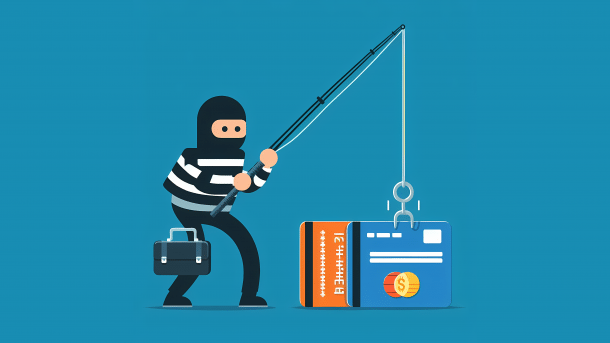Digital payment transactions: fraud attempts challenge consumers
Three quarters fall for fraudulent requests, even authentic warnings from payment service providers are unsettling. This is shown by a vzbv survey.

Phishers Phritz phisht phrische Phische.
(Image: Bild erstellt mit KI in Bing Designer durch heise online / dmk)
Phishing emails, fake websites, spoofing calls: The methods used by cyber criminals are becoming ever more sophisticated and the financial losses for consumers are steadily increasing. This is the result of a recent survey by the Federation of German Consumer Organizations (Verbraucherzentrale Bundesverband, vzbv). It shows how difficult it is for many people to distinguish fraudulent from genuine bank scams.
At the beginning of November 2023, the vzbv conducted an online survey representative of internet users with 1035 participants. They were confronted with four different scenarios from digital payment transactions - two were authentic and two were fraudulent. The respondents were asked to assess whether it was fraud and how they would react to it. The scenarios ranged from simple phishing attempts to more complex attacks that imitated real banking processes.
Fraud difficult to recognize, warnings misleading
As many as 57 percent of respondents suspected fraud in the fraudulent scenarios, but only 24 percent immediately rejected the request. Interestingly, 19 percent of respondents also considered genuine requests from banks to be suspected fraud, which according to the vzbv illustrates the high level of uncertainty.
Another result of the survey shows that warning messages from banks often do not fulfill their purpose. Only 16 percent of those surveyed who had fallen for a scam recognized the scam after receiving a warning message. Many consumers even saw the warning messages as confirmation of their correct behavior and were lulled into a false sense of security. They perceived the processes as "incomprehensible, complicated or confusing". This lack of clarity contributes to the fact that even legitimate requests are often classified as suspicious.
Fraud victims would draw consequences for digital payment transactions
The survey also shows the possible consequences for fraud victims. 43 percent of those who had fallen for a scam stated that they would severely restrict their digital life in the future. 19 percent would no longer use online banking and 13 percent would stop making online payments.
The full vzbv study (PDF, german) offers detailed insights into the various scenarios and the reactions of those surveyed, and can serve as a basis for future measures to improve security in digital payment transactions.
Phishing attempts at Netflix, savings banks and co.
The consumer advice center recently received numerous emails about phishing attempts on Netflix customers. This is shown by an entry from May 14 in the phishing radar. Fraudsters are taking advantage of the fact that Netflix customers have to change their subscription model. The last month for the ad-free basic offer is therefore June this year. The fraudsters send emails with the following subjects: "Please confirm your payment information / please check" or "Your membership has expired!". Other scams listed in the phishing radar concern, as so often, a "new security system at Sparkasse" and numerous banks such as Deutsche Bank.
(mack)